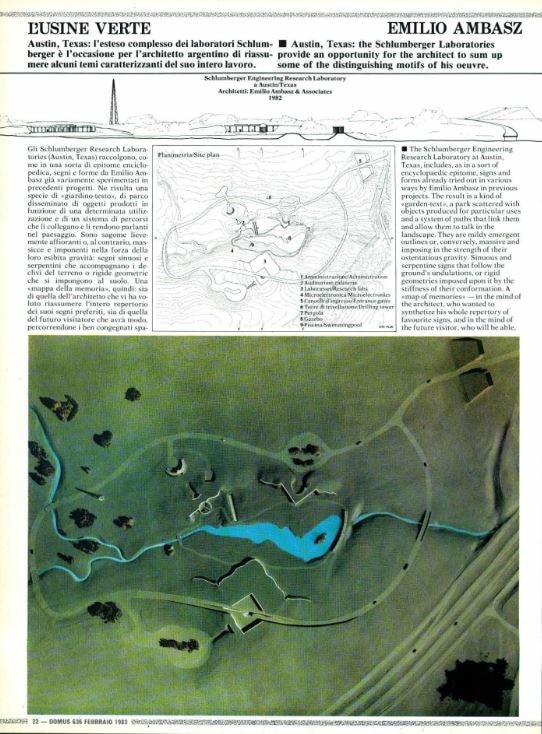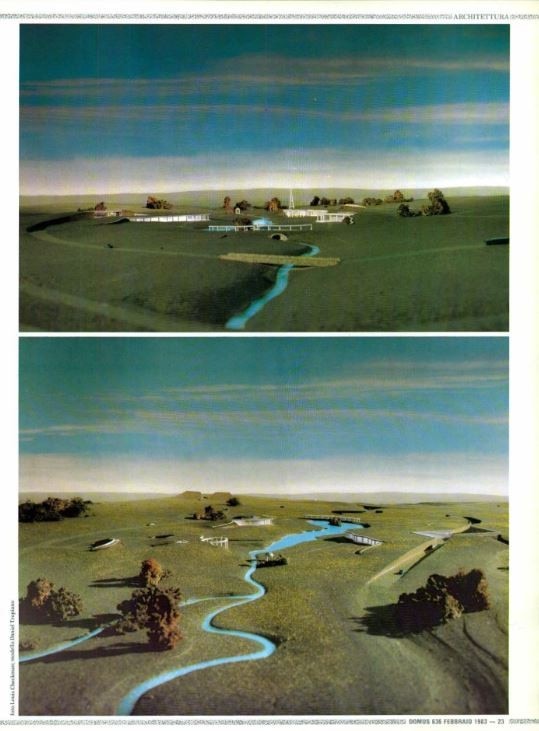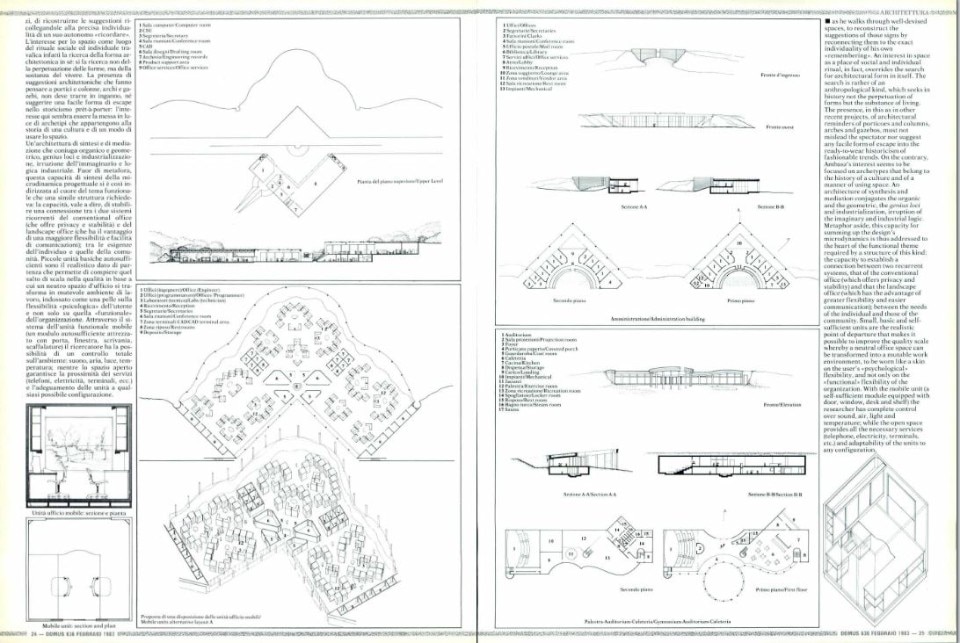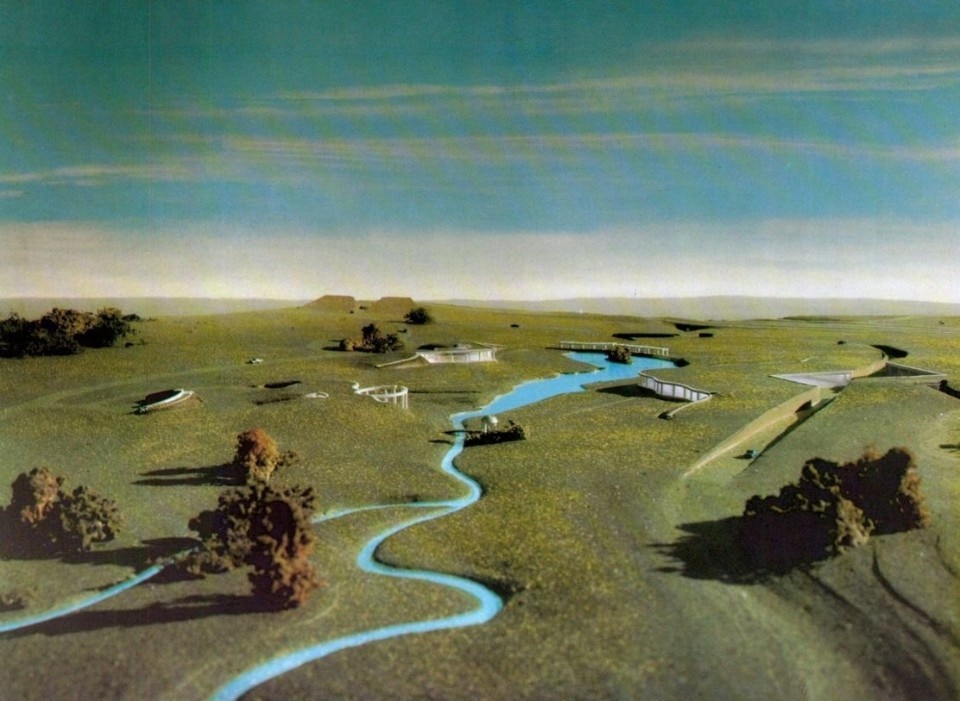“Green over gray”. Almost a claim, a risk of oversimplification; but this is not the case when talking about Emilio Ambasz, the multifaceted precursor of green architecture. The statement is a summary of an entire design philosophy, and consequent action, carried out over five decades, where massively covering or integrating buildings – each of them born “in defiance of nature” – with greenery corresponds to a restitution of the land taken by its realization. Ambasz has always placed himself on the most advanced front of research, whether it was shaping a cultural outline of Italian design as curator at MoMA for the 1972 exhibition Italy: the new domestic landscape in 1972, or materializing a provocative thought on the presence of greenery in cities as with the Prefectural International Hall in Fukuoka. In the early 1980s, the different cues of this theory of integration between building/artifact and nature were condensed into a project that would test them within the sharply characterized Texas landscape, where to place an office and laboratory complex. Domus published the experiment in February 1983, on issue 636.

The Usine Verte
The Schlumberger Engineering Research Laboratory at Austin, Texas, includes, as in a sort of encyclopaedic epitome, signs and forms already tried out in various ways by Emilio Ambasz in previous projects. The result is a kind of “garden-text”, a park scattered with objects produced for particular uses and a system of paths that link them and allow them to talk in the landscape. They are mildy emergent outlines or, conversely, massive and imposing in the strength of their ostentatious gravity. Sinuous and serpentine signs that follow the ground’s undulations, or rigid geometries imposed upon it by the stiffness of their conformation. A “map of memories” —in the mind of the architect, who wanted to synthetize his whole repertory of favourite signs, and in the mind of the future visitor, who will be able, as he walks through well-devised spaces, to reconstruct the suggestions of those signs by reconnecting them to the exact individuality of his own “remembering”.

An interest in space as a place of social and individual ritual, in fact, overrides the search for architectural form in itself. The search is rather of an anthropological kind, which seeks in history not the perpetuation of forms but the substance of living. The presence, in this as in other recent projects, of architectural reminders of porticoes and columns, arches and gazebos, must not mislead the spectator nor suggest any facile form of escape into the ready-to-wear historicism of fashionable trends. On the contrary, Ambasz’s interest seems to be focused on archetypes that belong to the history of a culture and of a manner of using space.
An architecture of synthesis and mediation conjugates the organic and the geometric, the genius loci and industrialization, irruption of the imaginary and industrial logic. Metaphor aside, this capacity for summing up the design’s microdynamics is thus addressed to the heart of the functional theme required by a structure of this kind: the capacity to establish a connection between two recurrent systems, that of the conventional office (which offers privacy and stability) and that the landscape office (which has the advantage of greater flexibility and easier communication); between the needs of the individual and those of the community.

Small, basic and self-sufficient units are the realistic point of departure that makes it possible to improve the quality scale whereby a neutral office space can be transformed into a mutable work environment, to be worn like a skin on the user’s “psychological” flexibility, and not only on the “functional” flexibility of the organization. With the mobile unit (a self-sufficient module equipped with door, window, desk and shelf) the researcher has complete control over sound, air, light and temperature; while the open space provides all the necessary services (telephone, electricity, terminals, etc.) and adaptability of the units to any configuration.


